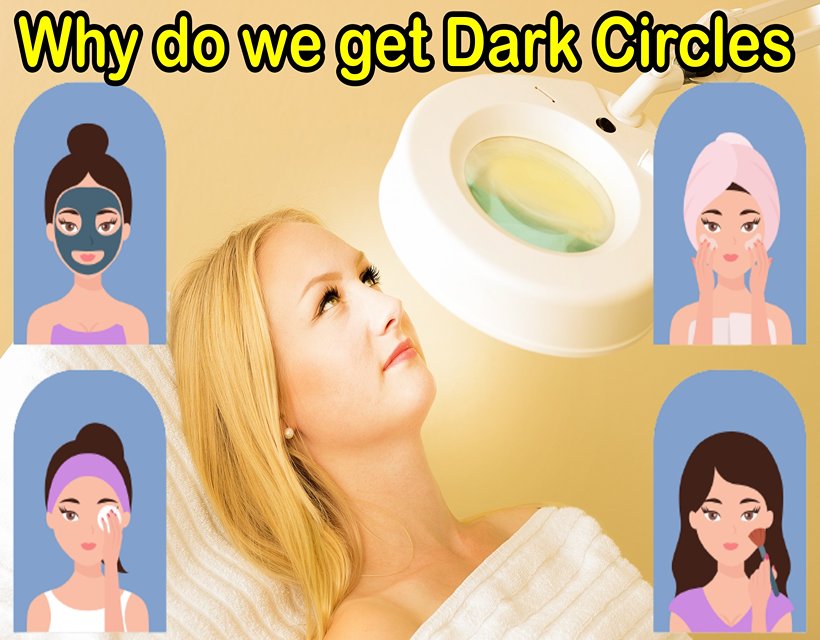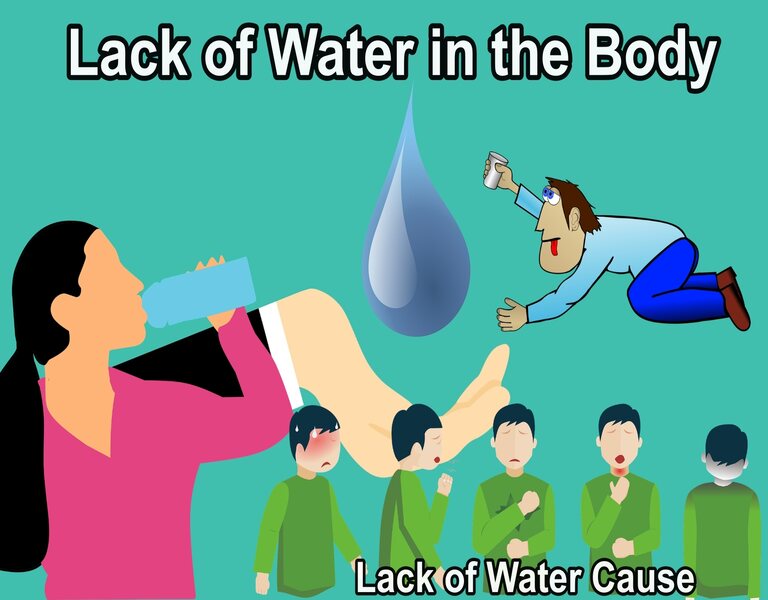Table of Contents
Why do we get Dark Circles
These unsightly blemishes under the eyes can be caused by a number of factors, including genetics, lifestyle habits, and underlying medical conditions. In this blog post, we will explore the various reasons why we get dark circles and what you can do to prevent and treat them. Why do we get Dark Circles – Dark circles under eyes
Firstly, genetics can play a major role in the development of dark circles. If your parents or other family members have them, there is a higher chance that you may develop them as well. This is because genetics can determine the thickness and texture of the skin under your eyes, which can make it more prone to darkening.
Secondly, lifestyle habits can contribute to the formation of dark circles. Lack of sleep, stress and poor diet can all affect the appearance of your skin, including the skin around your eyes. When you don’t get enough sleep, your body produces more cortisol, a hormone that can lead to the breakdown of collagen and elastin in your skin. This can cause the skin under your eyes to become thinner and more translucent, making blood vessels and veins more visible.
Thirdly, underlying medical conditions such as allergies, eczema, and anemia can cause dark circles. Allergies can cause inflammation and swelling around the eyes, while eczema can cause dry, itchy patches of skin. Anemia, a condition where there is a deficiency of iron in the blood, can cause a bluish tint to the skin under your eyes.
Finally, age is also a factor in the development of dark circles. As we age, our skin naturally becomes thinner and loses elasticity. This can make the veins and blood vessels under our eyes more visible, resulting in a dark appearance.
So, what can you do to prevent and treat dark circles? Here are some tips:
Get enough sleep: Aim for 7-9 hours of sleep per night to reduce the appearance of dark circles.
Eat a healthy diet: Incorporate plenty of fruits and vegetables into your diet, as well as foods rich in iron and vitamin C.
Protect your skin: Wear sunglasses and use sunscreen to protect the delicate skin around your eyes from the sun’s harmful rays.
Treat underlying medical conditions: If you have allergies, eczema, or anemia, see your doctor for treatment.
Use topical treatments: Look for skincare products containing ingredients such as vitamin C, retinol, and caffeine, which can help reduce the appearance of dark circles.
Dark circles can be caused by a variety of factors, including genetics, lifestyle habits, underlying medical conditions, and age. By taking steps to prevent and treat dark circles, you can improve the appearance of your skin and feel more confident in your appearance.
Types of Dark Circles
Dark circles under the eyes can be caused by a variety of factors, and depending on the cause, they can appear in different ways. In this article, we will discuss the different types of dark circles and what causes them.
Pigmentation-related dark circles:
Some people are more prone to dark circles due to hyperpigmentation, which is the result of an overproduction of melanin in the skin. This type of dark circle tends to appear brown or gray in color and is more common in individuals with darker skin tones. Pigmentation-related dark circles can be caused by genetics, sun exposure, and inflammation. They can be treated with topical skin-lightening agents, such as hydroquinone, vitamin C, or niacinamide.
Structural dark circles:
Structural dark circles are caused by the anatomy of the face, specifically, the position of the eyes in the skull. When the eyes are set deeper in the skull, it can create a shadowy area under the eyes, which can make the area appear darker. This type of dark circle tends to be more prominent in individuals with thin skin or a lower body fat percentage. It can be difficult to treat structural dark circles with topical products, but dermal fillers can be used to add volume and reduce the appearance of shadows under the eyes.
Vascular dark circles:
Vascular dark circles are caused by the visible blood vessels under the eyes, which can be due to thin skin, inflammation, or allergies. They often appear bluish or purple in color and can be exacerbated by poor sleep, dehydration, or aging. Vascular dark circles can be treated with topical products containing caffeine, vitamin K, or retinoids, which can help to reduce inflammation and improve circulation.
Fatigue-related dark circles:
Lack of sleep and fatigue can cause dark circles to appear under the eyes, due to the accumulation of fluid and the dilation of blood vessels. This type of dark circle tends to be puffy and swollen in appearance and can be treated with cold compresses, sleep, and hydration.
Medical-related dark circles:
Certain medical conditions, such as anemia, allergies, or thyroid problems, can cause dark circles to appear under the eyes. These types of dark circles tend to be accompanied by other symptoms, such as fatigue, swelling, or dry skin. Treating the underlying condition can often improve the appearance of dark circles.
Dark circles can appear in different ways depending on the underlying cause. Understanding the type of dark circles you have can help you determine the best treatment options for your specific needs. Why do we get Dark Circles – Dark circles under eyes
How can I stop my dark circles?
There are several ways you can try to stop or reduce the appearance of dark circles under your eyes.
Get enough sleep: Lack of sleep is a common cause of dark circles, so make sure you get enough rest.
Manage stress: Stress can also contribute to dark circles, so find ways to manage stress, such as exercise, yoga, meditation, or deep breathing.
Stay hydrated: Dehydration can make dark circles more noticeable, so make sure you drink enough water throughout the day.
Use sunscreen: Sun exposure can lead to pigmentation-related dark circles, so wear sunscreen and protect your skin from the sun.
Treat allergies: If you have allergies, they can cause inflammation and swelling under the eyes, which can make dark circles worse. Talk to your doctor about allergy medication or treatments.
Use eye creams: There are many eye creams on the market that can help reduce the appearance of dark circles. Look for products containing ingredients such as vitamin C, retinol, caffeine, or hyaluronic acid.
Try cold compresses: Applying a cold compress, such as a chilled cucumber or tea bag, to the area under your eyes can help reduce puffiness and inflammation.
Get enough iron: Iron deficiency can cause anemia, which can lead to a bluish tint under the eyes. Make sure you’re getting enough iron in your diet, or talk to your doctor about iron supplements if needed.
Dark circles can be caused by a variety of factors, and the best way to stop them will depend on the underlying cause. By getting enough sleep, managing stress, staying hydrated, protecting your skin, treating allergies, using eye creams, trying cold compresses, and getting enough iron.
What deficiency causes dark circles?
Iron deficiency anemia is a common cause of dark circles under the eyes. When you don’t have enough iron, your body can’t produce enough hemoglobin, and this can lead to a bluish tint under the eyes. Why do we get Dark Circles – Dark circles under eyes
In addition to dark circles, iron deficiency anemia can also cause other symptoms such as fatigue, weakness, shortness of breath, dizziness, and headaches.
If you suspect that your dark circles are due to iron deficiency anemia, it’s important to see a doctor for proper diagnosis and treatment. Your doctor may recommend iron supplements or other treatments to help you get the iron you need to produce healthy hemoglobin and improve the appearance of dark circles. However, it’s important to note that not all cases of dark circles are due to iron deficiency anemia, so it’s important to get a proper diagnosis before starting any treatments.
Does everyone get dark circles?
No, not everyone gets dark circles under their eyes. Dark circles are caused by a variety of factors, including genetics, lifestyle habits, and medical conditions. While some people are more prone to dark circles due to factors such as genetics or thin skin, others may never experience them.
That being said, certain lifestyle factors can increase your risk of developing dark circles. Lack of sleep, stress, dehydration and sun exposure can all contribute to the appearance of dark circles under the eyes. Allergies, sinus problems, and medical conditions such as anemia or thyroid problems can also cause dark circles.
If you are concerned about dark circles under your eyes, it’s a good idea to talk to your doctor or dermatologist to determine the underlying cause and the best treatment options for you. They can help you identify any lifestyle changes you may need to make or recommend topical treatments or procedures to help reduce the appearance of dark circles.
Does aloe vera gel remove dark circles?
Aloe vera gel may help reduce the appearance of dark circles under the eyes, but its effectiveness will depend on the cause of the dark circles. Aloe vera has anti-inflammatory properties, which can help reduce swelling and inflammation that can contribute to the appearance of dark circles.
To use aloe vera gel for dark rounds, you can apply a small amount of fresh aloe vera gel to the under-eye area, being careful not to get it into your eyes. Gently massage the gel into the skin and leave it on for 10-15 minutes before rinsing it off with cool water. You can repeat this treatment once or twice a day.
While aloe vera gel can be a natural and gentle option for reducing the appearance of dark circles, it may not be effective for everyone. If your dark circles are caused by an underlying medical condition, such as allergies or anemia, you may need to address the underlying cause to see improvement. Additionally, it’s important to remember that aloe vera gel is not a substitute for good sleep, hydration, and other healthy lifestyle habits that can help prevent and reduce the appearance of dark circles over time. Why do we get Dark Circles – Dark circles under eyes













